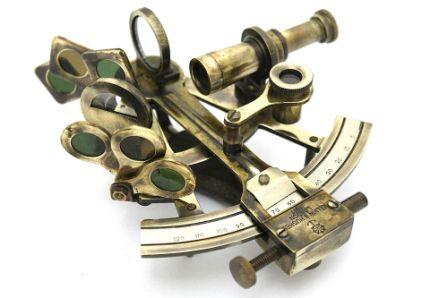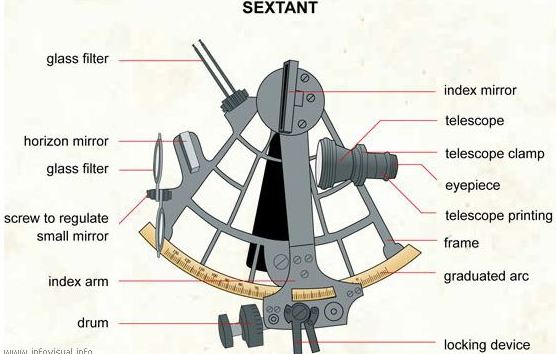A sextant is a doubly reflecting navigation instrument used to measure altitude or the angle between any two visible objects. Sextant is one of the oldest navigation instruments used by mariners, its called sextant because its arc is 1/6th of a circle i.e. 60° but it can measure angles upto 120° using double reflection principle.
Types of Sextant
- Micrometer Sextant
- Vernier Sextant
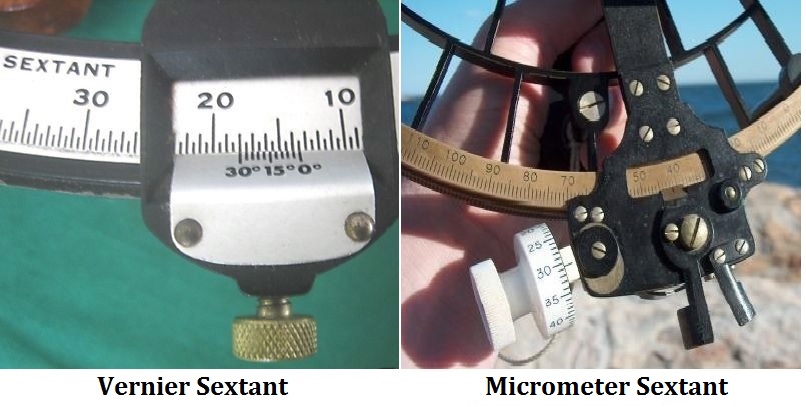
Comparison between the types of Sextants
- Construction and operating principle of both sextants are same. In both sextants, whole degrees are read on the arc of the sextant.
- The only difference lies in the way the fraction of a degree are read.
- As the name suggests, in vernier sextant, it is read by the vernier whereas in Micrometer sextant, it is read on the micrometer screw.
- Currently, vernier sextants are rarely used.
- On the micrometer drum, a degree may be divided into 100 parts or 60 parts.
- The fraction of a degree therefore can either be read in 1/100th of a degree, or up to 1/60th of a degree (which comes to one minute of arc).
Principle of Sextant
- When a ray of light is twice reflected by two mirrors in the same plane, the angle between the original incident ray and the final emergent ray is twice the angle between the mirrors. OR we could say that
- When a ray of light is reflected twice by two mirrors in the same plane ,the angle between the incident and reflected ray is twice the angle between the mirrors.
- Sextant has two mirrors, one of them fixed on the body of the sextant and the other is fixed on the index arm which is called the pivot and changes its angle with the fixed mirror.
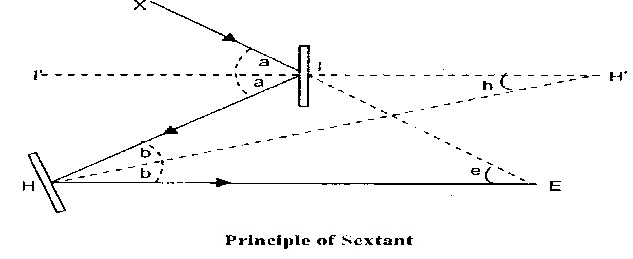
- In the diagram above, the altitude of object X is angle XEH.
- Which is measured by movement of Mirror H through angle b, which is half the angle XEH.
What is Use of Sextant?
- For measuring altitude of a celestial body to obtain position at sea.
- For measuring Vertical angles of a suitably high terrestrial objects
- Obtaining a fix at sea.
- For avoiding danger.
- To measure distance between ships when steaming in convoy
- For Measuring Horizontal Angles between two terrestrial objects for
- Obtaining a fix at sea.
- For avoiding danger.
- Hydrographic Surveys
What are errors of sextant?
Adjustable on board ship
- Perpendicularity Error
- Side Error
- Index Error
Adjustable by Instrument Maker
- Collimation Error
- Vernier Error
Non-Adjustable
- Centering Error
- Graduation Error
- Micrometer Error
- Shade Error
- Prismatic Error
The first three adjustable errors should be corrected in the given order –
- First the perpendicularity which is referred as to making the 1st adjustment
- Next the Side error which is , referred as to making the 2nd
- And finally the index error, referred as to making the 3rd adjustment.
What is the Perpendicularity Error?
Cause: Index mirror not perpendicular to the plane of the mirror
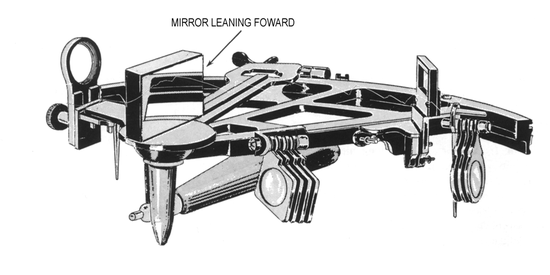
How to check perpendicularity error of sextant?
- Bring the index arm in the middle of the arc.
- Look obliquely into the index mirror
- If the true arc and its image are not in the same horizontal straight line, it means there is an Perpendicularity error.

